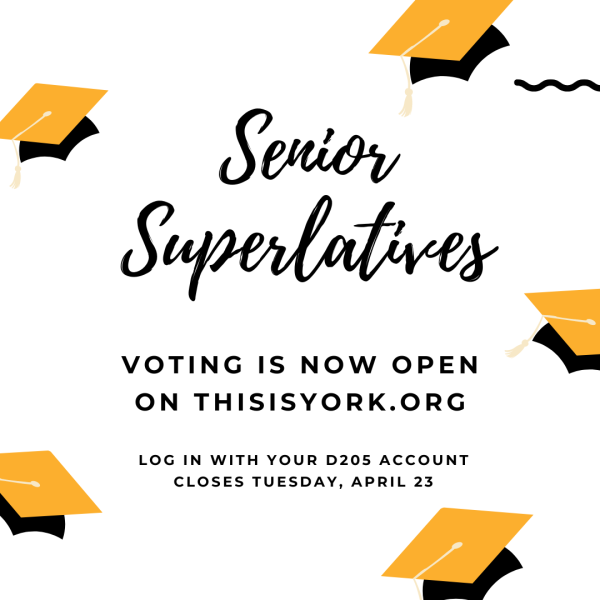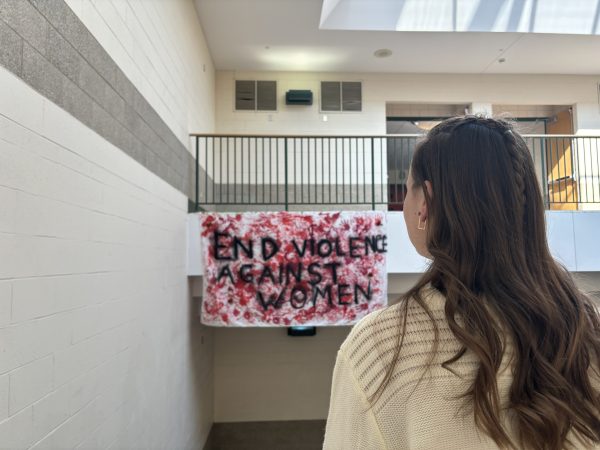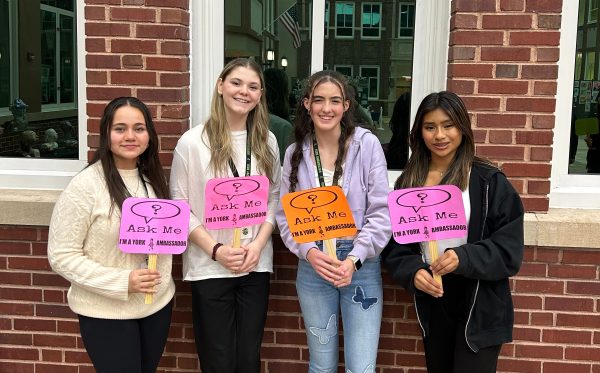Transitioning our actions

As of 2014, within the transgender community, attempted suicide rates in America soared to 44 percent, according to Live Science. This past December, one in particular prompted much discussion online.
Leelah Alcorn (born Joshua Ryan Alcorn) committed suicide in Lebanon, Ohio on Dec. 28 a few miles away from her home. Alcorn, 17, left a suicide note on her Tumblr page that was later deleted by her parents. The note read in part:
“Please don’t be sad, it’s for the better. The life I would’ve lived isn’t worth living…because I’m transgender. To put it simply, I feel like a girl trapped in a boy’s body, and I’ve felt that way ever since I was 4. I never knew there was a word for that feeling, nor was it possible for a boy to become a girl, so I never told anyone and I just continued to do traditionally ‘boyish’ things to try to fit in.”
Alcorn was buried under her birth name, Joshua.
In her note, she discussed her parents’ resentment for her desire to transition. At 16, Alcorn underwent conversion therapy, led by the National Association for Research and Therapy of Homosexuality (NARTH), which consists of a range of treatments for those trying to change sexual orientation or gender identity.
Alcorn wasn’t alone. Teens across the country struggle with identity issues–more than one might guess. The York community recognizes these common struggles and has set up support systems for those students, such as the gay-straight alliance club As.Is., led by Mrs. Thompson. While outlets like this help dramatically, we believe that’s not enough. We must include everyone in the solution, and that’s starts with educating.
Conversion Therapy
Lesser treatments in conversion therapy may include instructing the patient to engage in stereotypical “manly” activities, while more severe treatments may go as far as burning or freezing patients while showing them pictures of homosexuals, attempting to associate pain with same-sex contact.
Human Rights Campaign reported that LGBT (lesbian, gay, bisexual, transgender) teens that underwent conversion therapy were eight times more likely to commit suicide than those who were at least partially accepted by their family and friends.
Arguably the most disturbing part of conversion therapy is the legality it maintains in the United States. A petition on whitehouse.gov hoping to ban forced conversion therapy on minors says, “We respectfully seek your help to ban the practice known as ‘conversion therapy’ and name the bill in honor of Leelah Alcorn.” As of Feb. 10, the petition had exceeded its goal of 100,000 signatures.
By this point, most have heard of LGBT. It’s understood and now more commonly accepted that love and sex are not confined to just occurring between men and women. What remains unclear for some is the T on the end: what does it mean to be transgender?
Biology
Transgender means to have been assigned a gender at birth with which one does not identify. The “gender assignment” isn’t figured out blindly; a baby is assigned their gender based off of the reproductive organs they are born with. Trans sexuality—gender identity dysphoria—remains hidden within a newborn’s brain, unable to be sensed by others, therefore leaving the individual to deal with the dysphoria alone for years until they choose to come out.
In some births, a baby is born with reproductive organs of both sexes. Doctors can make changes to the baby’s genitalia through surgery to align more with one gender. In these cases, doctors and parents know of their child’s circumstances and can, with that knowledge, more easily take steps in protecting their child’s mental and physical health as they grow up.
But there’s controversy surrounding genital reshaping surgery on infants. A study by the Journal of Clinical Endocrinology “recommended that surgical decisions be postponed until adolescence or adulthood, when the patient can give informed consent,” according to Open Society Foundations.
Science has made breakthroughs over the past couple decades regarding what it means to be transgender, and persistently tries to answer two big questions: why does it happen, and how?
“It’s almost always hard for humans to try to understand something that is different from the way they personally feel,” said Mrs. Thompson, advisor for York’s club As.Is. One’s understanding of trans sexuality—something different from what most are used to—is unobtainable without one having an initial grasp of gender: what it means, and how it develops.
Biology teaches that having a Y chromosome makes for a male body, having two X’s makes for a female body. However, life isn’t so simple.
Brain researchers J.N. Zhou, M.A. Hoffman, L.J. Gooren, and D.F. Swaab studied animals in 1995 to better understand prenatal development and its effect on gender identification. Their results, according to their essay found on transgendercare.com, showed that the same sex hormones “that prenatally determine the [formation] of the genitalia also influence the [formation] and function of the brain.”
With this information, the researchers hypothesized that sexual differentiation, or the development of the internal and external genitalia, might not take the same path as the sexual differentiation of the brain in transsexuals. The connection is lost.
Laws
As it was for the rights of women and gays, progress regarding transgender rights has been slow but sure. The big to-do made of President Obama’s mere mention of transgender rights in his January State of the Union Address demonstrates our country’s lack of discussion about the issue. Disappointingly, it’s taken until 2015 for a president to even say the word in a speech; on the flip side, progress has to start somewhere, and here it has.
Obama said that, “as Americans…we condemn the persecution of…people who are lesbian, gay, bisexual, or transgender.” “Condemning”—not so much; making some positive changes for the transgender community—that, we’ve started to see.
The President added the categories of sexual orientation and gender identity in 2014 to an already-existing executive order prohibiting discrimination of federal employees based on sex, race, age, color, religion, or national origin.
While that law exclusively protects federal employees, several states may count themselves “on the right side of history,” as Obama said in a speech, through policy changes intended for the protection of transgender individuals.
In as early as 2006, Washington D.C. passed a law requiring all gender-specific signs on single-stall bathroom doors be removed and replaced with signs that say “Restroom.”
Philadelphia mandated in 2013 that all new or renovated buildings “include gender-neutral bathrooms in addition to traditional men’s and women’s restrooms,” as reported by NBC Philadelphia.
Multnomah County in Oregon followed suit around the same time, and this past Jan. 15, West Hollywood, California joined the movement.
Kalissa Canyon-Scopes, policy director for Multnomah’s Office of Diversity and Equity, told Katu.com, “What we have is complaints; people who just tell us their stories,” which include, according to Katu, “transgender employees who rush home at lunch to use the bathroom, find a business with a single-occupancy toilet, or hold it all day.”
These new laws don’t bring about equality: we’ve got a bathroom for men, one for women, and one for “other;” but now at least gender-nonconformists may relieve themselves in peace.
According to The American Civil Liberties Union, 17 states have laws defending gender identity as of 2013. (The list of states is on their website.) The laws vary, the ACLU website says: “For example, Nevada’s law bans discrimination in employment, housing, and public accommodations,” while “Maine’s law covers those categories plus credit and education.”
Whatever the degree of protection within their laws, these states are well ahead of the other 33 that have yet to take steps in ensuring the rights of their transgender residents.
On the other hand, some of those states have indeed taken steps—just in the wrong direction. Kansas governor Sam Brownback has felt since 2007 that an executive order put forth by the state’s then-governor democrat Kathleen Sebelius protecting LGBT individuals from being harassed or fired on the grounds of sexual orientation or gender identity “went too far,” according to The Chicago Tribune. On Feb. 10 of this year, Brownback issued his own executive order removing the discrimination protection.
“Sam Brownback has declared ‘open season’ on every one of [Kansas’ LGBT residents] by erasing their job protections,” Thomas Witt, head of Equality Kansas, said in a statement.
Targeting transgendered people specifically, Arizona Rep. John Kavanagh proposed a bill back in March that would have criminalized the usage of a bathroom other than the one designated for one’s birth sex. Much public objection led to Kavanagh tailoring the bill to “instead shield businesses from civil or criminal liability if they ban people from restrooms that don’t match their birth sex,” according to the Huffington Post.
But for now, transgendered Arizonans are safe. Kavanagh has given up the bill for this current Legislative session “due concerns over the proposal definitions among his caucus,” reported Transgender Law Center.
York’s Part
Adolescence is hard. It’s emotionally draining trying to find where in this convoluted world one fits in—especially having to do it alongside peers who sometimes act like they’ve got it all figured out.
“School is so not easy for the majority of teenagers that walk in here… for a variety of reasons,” said Mrs. Reynolds, a York social worker.
But Dukes can take pride in the efforts made by their social workers and teachers alike in creating a comfortable space for everyone. Reynolds explained that when students do reach out and ask for support, “we’ll work with teachers, we’ll work with parents, we’ll absolutely advocate for…whatever reason that might be.”
Students are not exempt from the solution: we know of our friends’ struggles, and those of our own. We trust each other in sharing our stories, craving validation. So why are some struggles less valid? Why do some struggles warrant peer support, and others get mocked?
At York, we hardly see the typical high school bullying scene with kids getting stuffed into lockers or being purposefully tripped in the cafeteria while holding their lunch trays, but we’re good at excluding people who are different, and at tossing around harmful slurs like they’re nothing. The answer to those previous questions is easy: it’s ignorance. But that’s no excuse.
Thompson, As.Is. advisor, says that wrapping one’s brain “around the idea that identity and orientation can be two different things” is a “process that takes time.” Though we may not ever fully “get” what it’s like to be someone else, we must continue to actively seek expanding our understanding and empathy.

















